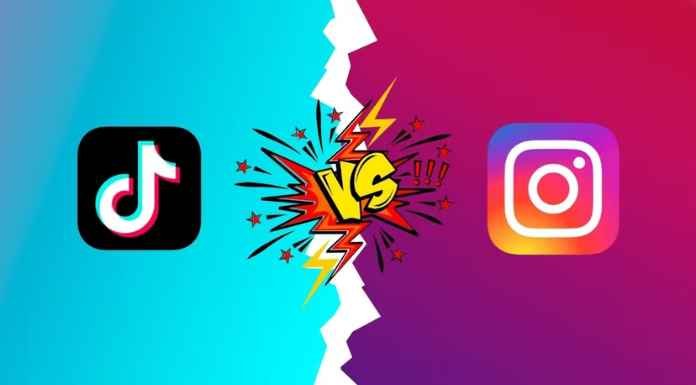In the ever-evolving world of social media, businesses are faced with an important decision: which platform should they focus on to maximize their marketing efforts? Two of the most popular social media platforms for businesses today are TikTok and Instagram. While both offer unique opportunities for brands to engage with audiences and build a strong online presence, understanding their differences is crucial to making the right choice for your business.
Get the Offer HERE

Get the Offer HERE
In this blog, we’ll compare TikTok and Instagram in terms of user demographics, content formats, engagement, advertising options, and business tools to help you decide which platform is the best fit for your business.
1. User Demographics
TikTok
- Age Range: TikTok is known for its young user base, with over 60% of its global users being under the age of 30. The platform is especially popular among Gen Z, making it an ideal choice for brands targeting a younger demographic.
- User Base Size: TikTok has rapidly grown to over 1 billion active users worldwide, with high engagement levels. Its popularity continues to soar, especially among teenagers and young adults.
Instagram
- Age Range: Instagram has a more diverse age range, with 67% of its users between 18-34 years old. While it started out as a platform for millennials, it has expanded its appeal to older age groups over the years.
- User Base Size: Instagram boasts over 2 billion active users, making it one of the largest social media platforms in the world. Its audience is more mature compared to TikTok, attracting a wider age range.
Which is better for your business?
If your brand targets Gen Z and younger millennials, TikTok might be the better choice. However, if you want to reach a more diverse audience that includes older age groups, Instagram could be more suitable.
2. Content Formats
TikTok
- Short-Form Video: TikTok’s core content format is short-form videos, typically ranging from 15 to 60 seconds. This format is ideal for quick, entertaining, and engaging content.
- Trends and Challenges: The platform is well-known for its viral challenges, dance trends, and lip-sync videos. Brands can leverage these trends to create relatable content and reach a broader audience.
- Live Streaming: TikTok also supports live streaming, which is popular for engaging with followers in real-time and hosting interactive events.
Instagram
- Variety of Content Types: Instagram offers multiple content formats, including photos, videos (up to 60 minutes with IGTV), Stories, Reels, and live streaming. This variety allows businesses to diversify their content strategy.
- Reels: Instagram Reels are similar to TikTok videos, with short-form video content that is often inspired by trending challenges. Reels are Instagram’s answer to TikTok’s popularity.
- Stories and Highlights: Instagram Stories allow businesses to share temporary content that lasts for 24 hours. Highlights enable users to save Stories on their profile for future viewing.
Which is better for your business?
If your content strategy is primarily focused on short-form videos and trend participation, TikTok may be a better choice. However, if you prefer to diversify your content across various formats (photos, Stories, Reels), Instagram provides more flexibility.
3. Engagement and Algorithm
TikTok
- High Engagement Rates: TikTok’s algorithm is designed to promote content based on user interests, rather than followers. This means that even accounts with few followers can achieve viral status if their content resonates with viewers.
- Content Discovery: The “For You” page curates content for each user based on their viewing habits, making it easier for brands to gain exposure.
- Community Interaction: TikTok’s community is highly interactive, with trends and challenges being a major aspect of the platform. Users are more likely to participate in user-generated content related to these trends.
Instagram
- Algorithm Updates: Instagram’s algorithm tends to prioritize content from accounts that users interact with most. This can make it harder for new or smaller accounts to gain traction without a solid follower base.
- Engagement Rates: While Instagram has high engagement rates, they are not as high as TikTok’s, especially when it comes to Reels. However, users still frequently engage with posts, Stories, and live content.
- Stories and Direct Messages: Instagram users can interact with brands via Stories or direct messages, creating more personalized engagement opportunities.
Which is better for your business?
TikTok offers a better opportunity for organic reach and engagement due to its content discovery algorithm. If going viral and engaging with trends is important for your brand, TikTok might be the better platform. On the other hand, Instagram’s various engagement features make it ideal for businesses looking to build long-term relationships with followers.
4. Advertising Options
TikTok
- Ad Formats: TikTok provides several ad formats including In-Feed Ads, Branded Hashtag Challenges, TopView Ads, and Branded Effects.
- Targeting Options: The platform allows for precise audience targeting based on demographics, interests, and behaviors. It is suitable for both brand awareness campaigns and conversion-focused ads.
- Cost Consideration: TikTok’s ad costs can be higher compared to other platforms, but the high engagement levels can deliver a strong return on investment.
Instagram
- Ad Formats: Instagram’s advertising options include Photo Ads, Video Ads, Carousel Ads, Story Ads, Reels Ads, and Shopping Ads. Businesses can also promote posts to reach a larger audience.
- Facebook Integration: Since Instagram is owned by Facebook, advertisers can use Facebook’s robust Ads Manager to create and manage campaigns, allowing for detailed audience targeting and tracking.
- E-commerce Integration: Instagram Shopping allows businesses to tag products in posts and Stories, enabling seamless in-app purchases.
Which is better for your business?
If your brand thrives on visual storytelling and e-commerce, Instagram’s diverse ad formats and shopping integration may be more effective. However, TikTok’s unique ad formats like Branded Hashtag Challenges offer creative opportunities for engagement.
5. Business Tools and Features
TikTok
- TikTok Pro Accounts: Offers analytics on video performance, follower growth, and trending content.
- Creator Marketplace: Facilitates collaborations between brands and TikTok influencers, helping businesses reach new audiences.
- E-commerce Integration: TikTok is expanding its e-commerce capabilities, allowing businesses to sell products directly through the platform.
Instagram
- Instagram Insights: Provides data on content performance, audience demographics, and follower activity.
- Instagram Shopping: Enables businesses to create a shop on their profile and tag products in posts and Stories.
- Creator Studio: Helps businesses manage content and track analytics across multiple Instagram accounts.
Which is better for your business?
Both platforms provide robust tools for business growth, but Instagram has more mature e-commerce features. TikTok is rapidly expanding in this area, making it worth considering if you’re targeting a younger, trend-focused audience.
Get the Offer HERE
Conclusion: Which Platform Should You Choose?
The choice between TikTok and Instagram depends on your target audience, content strategy, and business goals:
- TikTok is ideal if you’re looking to engage a younger audience, capitalize on viral trends, and leverage short-form video content.
- Instagram is better suited for brands seeking a wider demographic, diverse content formats, and more advanced e-commerce integration.
For many businesses, a combination of both platforms may be the best approach, allowing them to maximize their reach and engagement.
Call to Action
Ready to take your social media marketing to the next level? Get Started with TikTok Marketing and leverage the power of short-form video to boost your brand’s presence online!






